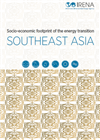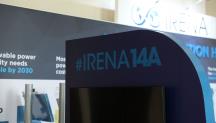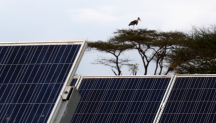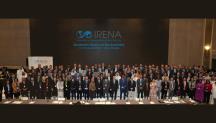

-
-
IRENA (2023), Socio-economic footprint of the energy transition: Southeast Asia, International Renewable Energy Agency, Abu Dhabi.
Copied
https://mc-cd8320d4-36a1-40ac-83cc-3389-cdn-endpoint.azureedge.net/-/media/Files/IRENA/Agency/Publication/2023/Jul/IRENA_Socioeconomic-footprint_energy_transition_SE_Asia_2023.pdf?rev=0c57309e369c4945879e056f2d92612e
Copied
Socio-economic footprint of the energy transition: Southeast Asia
Newsletter
Southeast Asia has witnessed impressive economic growth in the past three decades. Its gross domestic product (GDP), expressed in terms of purchasing power parity (PPP), has expanded at a compound annual growth rate (CAGR) of 4.7%. Southeast Asia has also made significant progress in social development and in raising the standard of living for its citizens. However, growth and development have also placed considerable strain on the existing development model that must be addressed to safeguard future development and living standards. This necessitates a new model for the sustainable utilisation of the region’s natural resources – to which the region’s socio-economic development is tied. While the past few years have stretched resources and forced a focus on near-term priorities – especially during the COVID-19 pandemic – the region’s socio-economic outlook depends on its ability to reshape its own development narrative.
Informed by IRENA’s World Energy Transitions Outlook for the development of a sustainable and cleaner energy system, this report explores the potential socio-economic impacts of the energy transition in Southeast Asia under two scenarios. IRENA’s analysis has shown that a comprehensive and more ambitious energy transition will lead to improved socio-economic outcomes. Under the 1.5°C Scenario, the GDP of Southeast Asia is expected to be 3.4% higher over the 2021-2050 period than in the Planned Energy Scenario (PES). Greater household consumption, trade surpluses and international co-operation flows, as well as higher transition-related investment, are the main drivers of this difference in GDP outcomes. Southeast Asia is expected to also experience 1.0% more economy-wide jobs and 10.9% higher social welfare than in the PES over the 2021-2050 period. In the renewable energy sector, the 1.5°C Scenario could boost employment substantially, from around 1.3 million currently to around 3.9 million by 2030 and some 5.1 million (mainly bioenergy and solar technologies) by 2050.
For these benefits to be realised, ASEAN countries will require a comprehensive policy framework that not only drives forward the energy transition but also protects people, livelihoods and jobs. The region’s energy transition policy framework should be holistic to provide clean and sufficient energy to all, and enable a just transition from fossil-based to renewables-based economies. Addressing justice and fairness is essential to ensure support and buy-in by all (including national stakeholders, regional-level actors and citizens), deliver benefits equitably, leave no one behind, avoid costs falling disproportionately on disadvantaged groups, and ensure the energy transition supports rather than counteracts social welfare and equality.




